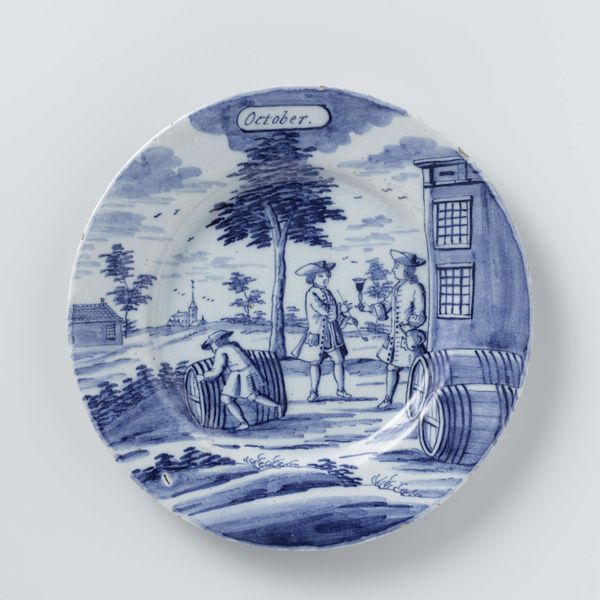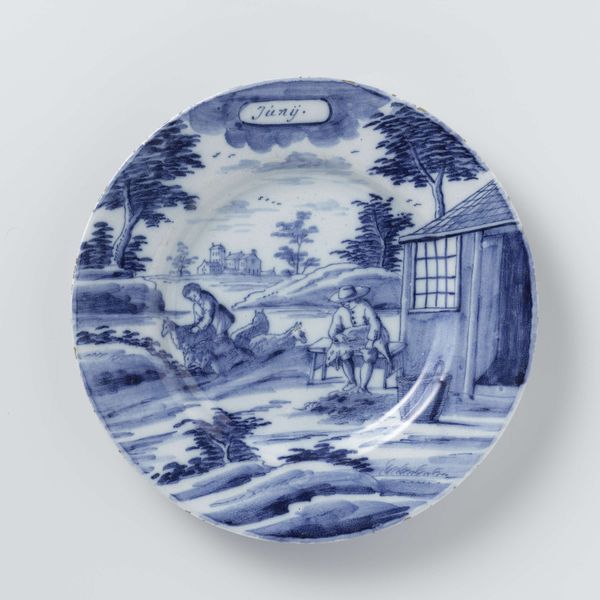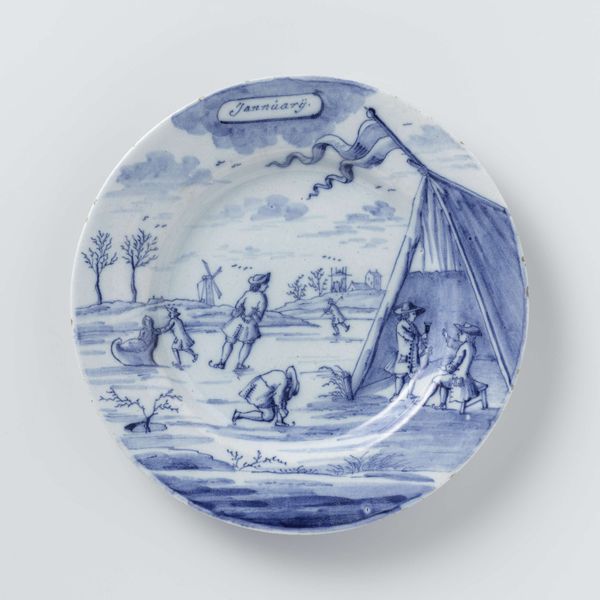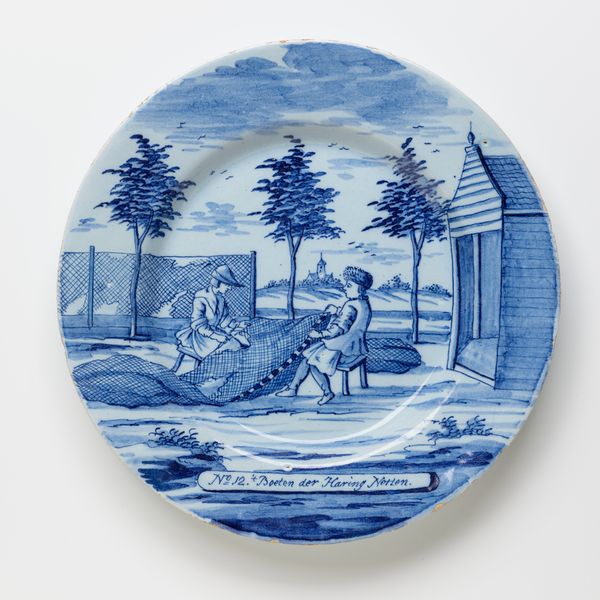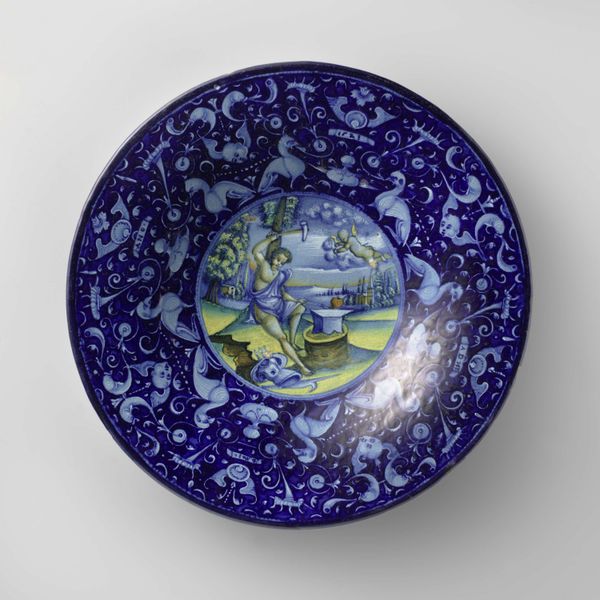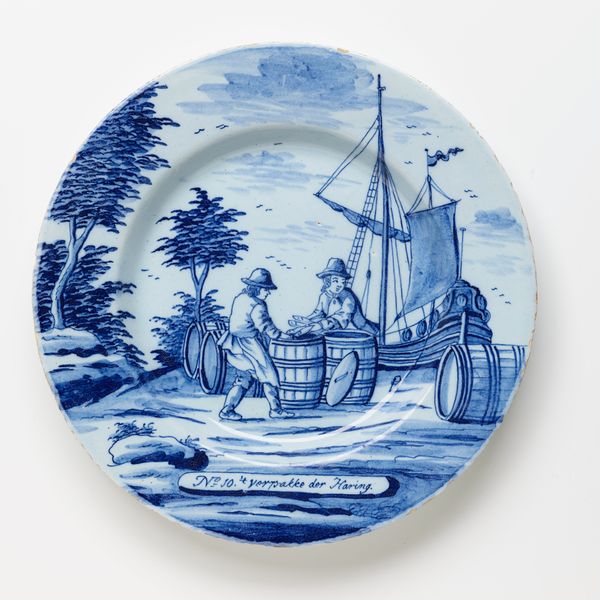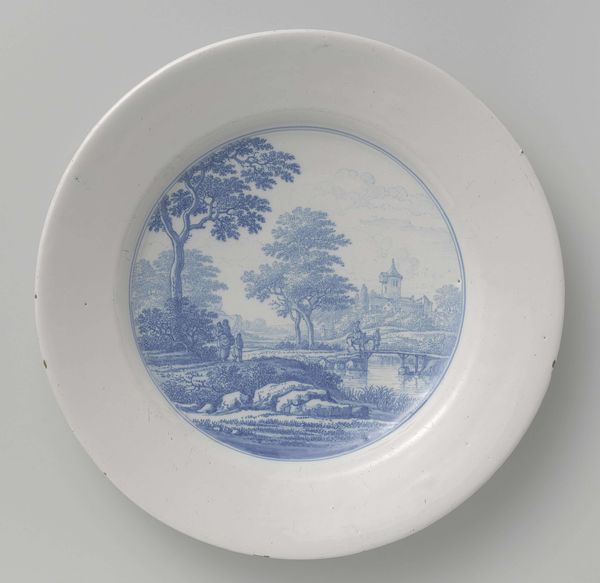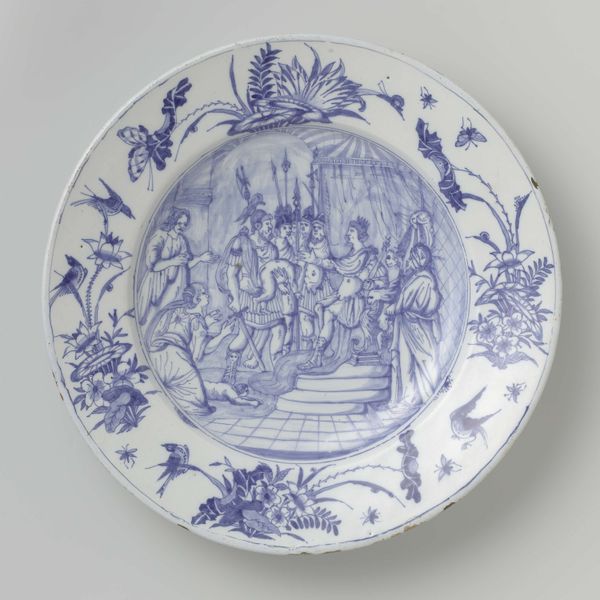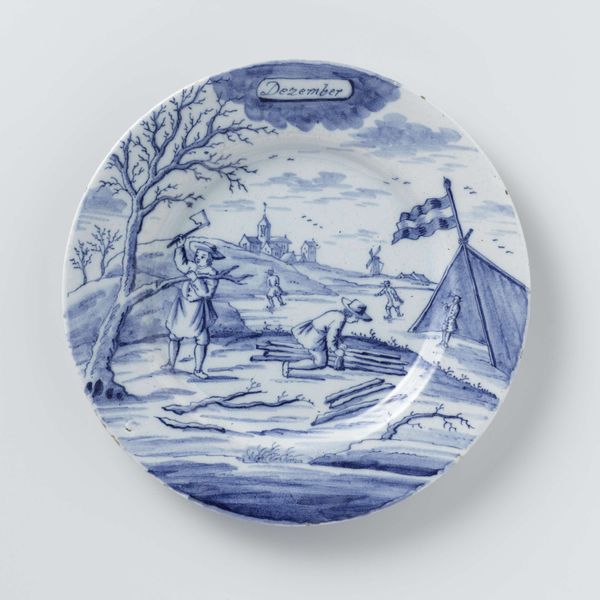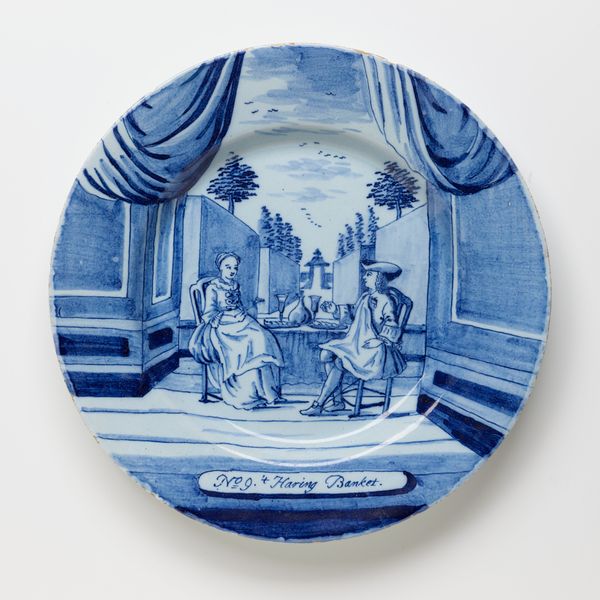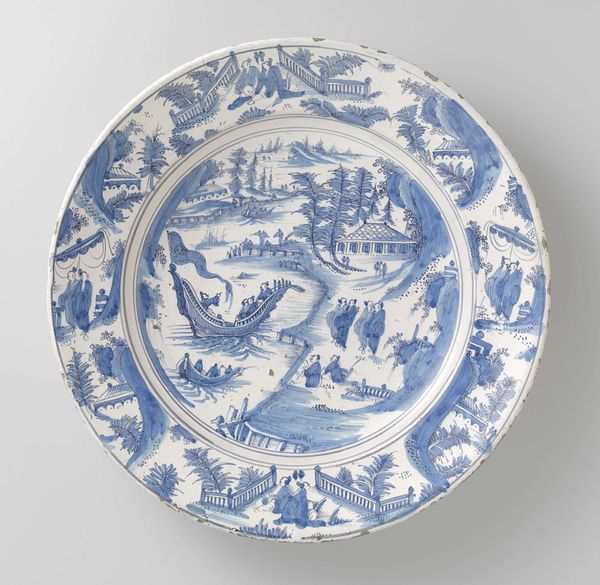
ceramic, earthenware
#
portrait
#
landscape
#
ceramic
#
earthenware
#
genre-painting
#
miniature
#
rococo
Copyright: Rijks Museum: Open Domain
Editor: Here we have "Bord," a delightful earthenware plate created sometime between 1750 and 1780. The blue and white scene almost feels like a glimpse into a miniature world. How can we unpack this, from a historian's perspective? Curator: Indeed! Think about what earthenware meant during this time. It wasn't just about having dishes; it reflected social status. Blue and white ware, particularly mimicking Chinese porcelain, was incredibly fashionable in Europe, signaling wealth and sophistication. Editor: So, this plate isn't just decorative, it's communicating something about the owner? Curator: Absolutely! Consider the imagery: we see a Rococo-inspired landscape, complete with figures engaged in leisure. What message is being broadcast through these pastoral scenes? Editor: Maybe it's about presenting a lifestyle, or an idealized view of rural life detached from the reality of agricultural labor? Curator: Precisely. This "genre painting" is contained within the circular boundary of the plate, transforming the domestic object into a canvas to display very specific values. The miniature landscape becomes a carefully controlled and curated world. The very act of using and displaying this plate contributes to its socio-political significance, right? Editor: That makes so much sense. I'd only been seeing this piece as a cute snapshot of daily life. Now, I'm appreciating how the image operates as an aesthetic object communicating on aspects of cultural aspirations during the 18th century. Curator: Exactly! This piece serves not only function, but to perform. What better conversation piece for those enjoying tea!
Comments
No comments
Be the first to comment and join the conversation on the ultimate creative platform.
